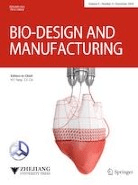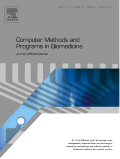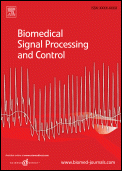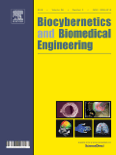
Biomedical Engineering-Biomedizinische Technik
Scope & Guideline
Shaping the Future of Healthcare with Engineering Excellence
Introduction
Aims and Scopes
- Medical Imaging and Diagnostics:
Research in this area includes advancements in imaging techniques such as MRI, CT, and ultrasound, focusing on improving image quality, diagnostic accuracy, and patient outcomes through novel algorithms and technologies. - Biomechanics and Rehabilitation Engineering:
Studies in this scope examine the mechanical aspects of biological systems and the development of assistive devices, focusing on rehabilitation technologies and their applications in clinical settings. - Wearable and Implantable Technologies:
The journal covers research on the design and implementation of wearable devices and implantable technologies for continuous health monitoring, including biosensors and smart textiles. - Machine Learning and Artificial Intelligence in Healthcare:
Emerging methodologies utilizing machine learning and AI are explored for applications in diagnostics, predictive modeling, and personalized medicine, emphasizing data-driven approaches to healthcare. - Tissue Engineering and Regenerative Medicine:
Research in this area focuses on the development of biomaterials and tissue engineering strategies for regenerative applications, including the design of scaffolds and the evaluation of biocompatibility. - Signal Processing and Biomedical Data Analysis:
The journal addresses innovative techniques for processing and analyzing biomedical signals, including EEG, ECG, and EMG, to enhance diagnostic capabilities and treatment monitoring.
Trending and Emerging
- Artificial Intelligence and Deep Learning Applications:
There is a growing trend in employing AI and deep learning techniques for medical diagnostics, image analysis, and patient monitoring, reflecting the broader integration of technology in healthcare. - Telemedicine and Remote Monitoring:
Research on telehealth solutions and remote patient monitoring technologies is on the rise, driven by the increasing demand for accessible healthcare services and the need for effective management of chronic diseases. - Regenerative Medicine and Advanced Biomaterials:
Emerging studies on novel biomaterials and their applications in regenerative medicine are gaining attention, highlighting the importance of material science in developing new therapeutic strategies. - Real-time Health Monitoring Systems:
The development of real-time monitoring systems using wearable technology and IoT devices is trending, focusing on continuous health assessment and proactive healthcare interventions. - Ethical and Regulatory Aspects of Biomedical Engineering:
An increasing number of publications are addressing the ethical implications and regulatory challenges associated with new biomedical technologies, reflecting the need for responsible innovation.
Declining or Waning
- Traditional Surgical Techniques:
Research on conventional surgical methods is becoming less prominent as the field shifts towards minimally invasive techniques and robotic-assisted surgeries. - Basic Biomedical Research:
There has been a noticeable decrease in publications centered on basic biological research without a clear engineering application, as the journal increasingly emphasizes translational and applied research. - Conventional Prosthetics:
Traditional prosthetic research is waning, likely due to the rise of advanced biomimetic and smart prosthetic technologies that integrate more sophisticated control mechanisms and materials.
Similar Journals

VIEW
Illuminating Pathways in Biomaterials Research and Application.VIEW is a prestigious journal published by WILEY that focuses on the rapidly evolving fields of Biomaterials and Biomedical Engineering. Since its inception in 2020, VIEW has established itself as an open-access platform dedicated to disseminating high-quality research and innovation within these disciplines. With an impressive impact factor that places it in the Q1 category of both Biomaterials and Biomedical Engineering, VIEW ranks among the top journals in its field, boasting a 91st percentile ranking in Biomedical Engineering and an 85th percentile ranking in Materials Science. Researchers, professionals, and students are encouraged to utilize this invaluable resource, as it provides a comprehensive view of current advancements and future trends in biomaterial science and engineering. Positioned in the United Kingdom, VIEW operates as a vital scholarly communication link, fostering collaboration and knowledge sharing within an ever-growing global community.

Advanced Biomedical Engineering
Fostering collaboration across biomedical frontiers.Advanced Biomedical Engineering is a peer-reviewed open access journal published by the Japanese Society for Medical & Biological Engineering, dedicated to disseminating high-quality research in the multidisciplinary fields of biomedical engineering. Boasting an ISSN of 2187-5219, this journal has been pivotal since its inception in 2018, especially as it embraces the open access model to foster knowledge sharing and wide accessibility. Centered in Tokyo, Japan, it serves as a vital platform for scholars and practitioners across various domains, such as biomaterials, biomedical engineering, and biotechnology. Despite currently residing in the Q4 quartile across several categories, including those in biotechnology and computer science applications, the journal is committed to elevating its academic impact and reputation, aiming for improved rankings in Scopus and other databases. Researchers and professionals are encouraged to contribute their innovative findings, discussions, and case studies, facilitating the advancement of this dynamic field.

Journal of Mechanics in Medicine and Biology
Bridging Disciplines for a Healthier FutureThe Journal of Mechanics in Medicine and Biology, published by World Scientific Publishing Co Pte Ltd, serves as a critical platform for interdisciplinary research at the intersection of engineering and biomedical sciences. With an ISSN of 0219-5194 and E-ISSN of 1793-6810, this esteemed journal has been dedicated to exploring the mechanical principles that govern biological systems since its inception in 2008. Based in Singapore, it addresses a diverse range of topics, from biomaterials to biomechanics, contributing valuable insights into the field’s evolving landscape. Although currently positioned in Q4 of Biomedical Engineering according to the 2023 category quartiles, it is poised for growth and increased visibility within the scientific community, fostering innovation and collaboration among researchers, professionals, and students alike. The journal emphasizes the importance of cutting-edge research and its practical implications, making it a vital resource for those striving to enhance the future of medical technologies and biological understanding.

ANNALS OF BIOMEDICAL ENGINEERING
Unveiling the science behind healthcare advancements.ANNALS OF BIOMEDICAL ENGINEERING is a premier journal in the field of biomedical engineering, published by Springer. Established in 1972, this journal has become a vital resource for researchers, professionals, and students engaged in the rapidly evolving domain of biomedical technology. With a commendable impact factor and ranked in the 76th percentile among its peers as per Scopus, it exemplifies excellence in disseminating critical research findings. The journal covers a broad scope of topics related to the integration of engineering principles with medical and biological sciences, facilitating innovations that enhance healthcare outcomes. Although open access is not offered in this journal, it remains an essential platform for scholarly communication, contributing to the continuous advancement of knowledge in biomedical engineering. ANNALS OF BIOMEDICAL ENGINEERING is not only a bridge for academics to share groundbreaking research but also an influential guide for practical applications in medicine and health technologies, making it a fundamental publication for its readership.

Bio-Design and Manufacturing
Crafting the Future Through Bio-Design InnovationsBio-Design and Manufacturing, published by SPRINGER HEIDELBERG, is a pioneering journal that stands at the forefront of innovation in the fields of Biomedical Engineering, Biotechnology, Industrial and Manufacturing Engineering, and Materials Science. With its ISSN 2096-5524 and E-ISSN 2522-8552, this journal has established itself as a leading platform for disseminating cutting-edge research and advancements that merge biological principles with manufacturing processes, emphasizing sustainable and efficient practices. It has garnered recognition in the 2023 category quartiles, boasting a Q1 rank in all its relevant fields, which underscores its significance and impact—evident from its prime Scopus rankings that place it within the top percentiles of numerous engineering and materials science disciplines. Researchers, professionals, and students alike benefit from the wealth of knowledge presented in this journal, making it an essential resource for those seeking to enhance their understanding of bio-design applications and innovation in manufacturing processes.

Computer Methods and Programs in Biomedicine
Exploring Cutting-Edge Methods in Biomedical Computing.Computer Methods and Programs in Biomedicine, published by ELSEVIER IRELAND LTD, is a leading journal at the intersection of computer science and biomedical research. With an impressive impact factor evidenced by its Q1 rankings in multiple categories—Computer Science Applications, Health Informatics, and Software—this journal ranks highly among peer publications, showcasing its significance in advancing interdisciplinary research. Covering a wide array of topics since its inception in 1985, it is particularly crucial for those invested in the innovation of computational methods applied to the biomedical field. The journal has established a strong reputation, with Scopus rankings placing it in the top percentiles across its relevant sectors, including the 14th position out of 138 in Health Informatics. Researchers, practitioners, and students looking to explore current trends, methodologies, and advancements in biomedical applications of computer science will find this journal an invaluable resource.

Journal of Medical Signals & Sensors
Connecting Research and Practice in Medical TechnologyJournal of Medical Signals & Sensors, published by Wolters Kluwer Medknow Publications, is a pioneering platform in the fields of Biomedical Engineering, Computer Science, and Health Informatics, focusing on innovative research and advancements in medical technology. With an Open Access policy since 2012, the journal promotes widespread dissemination of knowledge, aiming to facilitate the sharing of vital insights and developments among researchers, healthcare professionals, and students globally. The journal has achieved commendable rankings in its various categories, including Q3 in Biomedical Engineering and Radiology, underscoring its importance in advancing health technology and informatics. Its commitment to rigorous peer review ensures that published works are of the highest quality, making it a valuable resource for those engaged in cutting-edge medical research. With annual publications planned through 2024, the Journal of Medical Signals & Sensors continues to expand its influence and relevance in a rapidly evolving scientific landscape.

Biomedical Signal Processing and Control
Advancing biomedical innovation through signal mastery.Biomedical Signal Processing and Control is a premier academic journal published by ELSEVIER SCI LTD that stands at the forefront of the rapidly evolving fields of biomedical engineering, health informatics, and signal processing. With an impressive impact factor reflecting its scholarly influence and high standards of research, this journal has been recognized in the Q1 quartile category across multiple disciplines as of 2023. Specifically, it holds esteemed positions within Biomedical Engineering, Health Informatics, and Signal Processing, where it ranks in the top tier of its field on Scopus: #19/131, #21/138, and #47/303 respectively. Published continually from 2006 to 2024, the journal serves as a critical platform for researchers, healthcare professionals, and students, fostering innovation in signal processing techniques and their applications in biomedical systems. Access to cutting-edge research and methodologies makes it an indispensable resource for advancing knowledge and practice within these interdisciplinary domains.

Biocybernetics and Biomedical Engineering
Unleashing the Potential of AI in HealthcareBiocybernetics and Biomedical Engineering, published by ELSEVIER in the Netherlands, is a prestigious journal that stands at the forefront of the intersecting fields of biomedical engineering and artificial intelligence. With an impressive Impact Factor that places it in the Q1 category for Biomedical Engineering, this journal not only ranks 17th out of 303 in Scopus but also boasts a remarkable percentile ranking of 94th, highlighting its influence and relevance within the scientific community. Since its inception in 2008, Biocybernetics and Biomedical Engineering has aimed to publish cutting-edge research that integrates principles of cybernetics with technological advancements in health care, thereby fostering innovations that improve patient outcomes. Dedicated to advancing knowledge in biomedical technology, the journal serves as a vital resource for researchers, professionals, and students seeking to explore the latest developments and methodologies in the field.

BIO-MEDICAL MATERIALS AND ENGINEERING
Unveiling the potential of biomaterials in clinical practice.BIO-MEDICAL MATERIALS AND ENGINEERING, published by IOS PRESS, serves as a vital platform for advancing the fields of biomaterials and biomedical engineering. With its ISSN 0959-2989 and E-ISSN 1878-3619, the journal has been consistently disseminating high-quality research since its inception in 1991, covering a diverse range of studies on the development and application of biomedical materials. Although currently classified in the Q4 quartile in several categories including biomaterials and biomedical engineering, the journal aims to appeal to a broad audience of researchers and professionals, fostering collaboration and innovation in translating new materials into clinical practice. Located in the Netherlands, it emphasizes the importance of interdisciplinary approaches and provides a forum for new ideas and findings that could significantly impact healthcare solutions. While not an open-access journal, it provides various access options to maximize the reach and engagement of its research. Researchers, practitioners, and students alike will find valuable insights and comprehensive studies within its pages, contributing to the continued evolution of biomedical sciences.